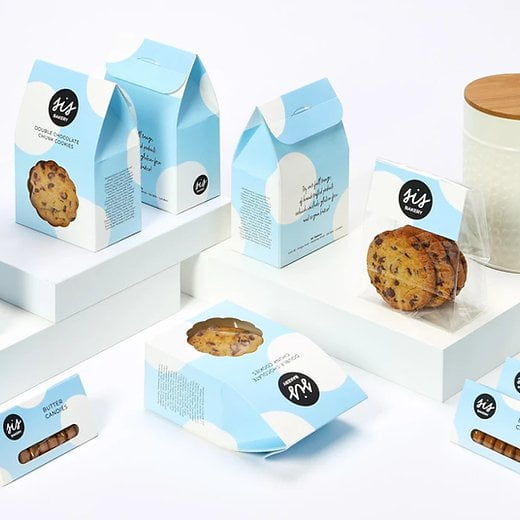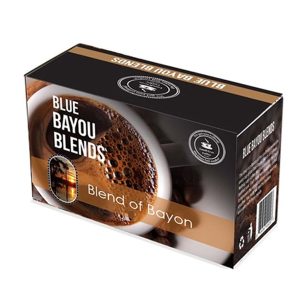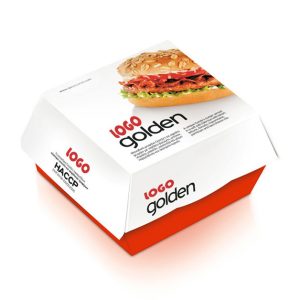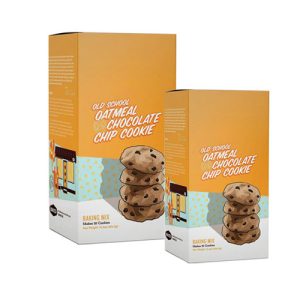Description
Food packaging plays a crucial role in ensuring the safety, preservation, and presentation of food products. Food packaging boxes are specifically designed containers that offer protection, convenience, and branding opportunities for various food items. In this article, we will explore the importance of food packaging boxes, their benefits, different types available, and how they contribute to the overall food industry.
Introduction
Food packaging boxes serve as a critical component in the food industry, ensuring that products reach consumers in optimal condition. They are designed to protect food items from contamination, extend shelf life, facilitate transportation, and enhance brand visibility. In this article, we will delve into the world of food packaging boxes, exploring their significance, benefits, and the factors to consider when designing them.
Importance of Food Packaging Boxes
Food packaging boxes play a vital role in maintaining the freshness and quality of food products. They provide a protective barrier against physical, chemical, and biological factors that can compromise food safety. Additionally, they help prevent spoilage, preserve flavors, and reduce the risk of contamination during handling and distribution.
Benefits of Using Food Packaging Boxes
Using food packaging boxes offers numerous advantages for both food manufacturers and consumers. Some of the key benefits include:
i. Protection and Preservation
Food packaging boxes provide a secure enclosure for food items, shielding them from external elements such as moisture, light, and air. This protection helps to preserve the quality, taste, and nutritional value of the food, ensuring it reaches consumers in its intended state.
ii. Convenience and Portability
Well-designed food packaging boxes are convenient and easy to handle. They are often lightweight, stackable, and come with features like handles or resealable options for added convenience. Such packaging enables consumers to transport and store food items with ease.
iii. Branding and Marketing
Food packaging boxes offer a valuable platform for brand promotion and marketing. With customizable designs and branding elements, businesses can create a distinct identity for their products. Eye-catching packaging helps attract customers and communicates brand values effectively.
Types of Food Packaging Boxes
Food packaging boxes come in various types to cater to different food products and packaging needs. Some common types include:
i. Cardboard Boxes
Cardboard boxes are widely used for packaging a range of food items. They are durable, versatile, and can be easily customized to meet specific requirements. Cardboard boxes provide excellent protection and are suitable for dry goods, cereals, snacks, and frozen foods.
ii. Paperboard Cartons
Paperboard cartons are commonly used for packaging beverages, dairy products, and dry goods. They offer good insulation and are easily recyclable. Paperboard cartons are lightweight, stackable, and often feature spouts or resealable tops for easy pouring and storage.
Key Considerations for Food Packaging Design
When designing food packaging boxes, several factors need to be considered to ensure functionality, safety, and consumer appeal. These include:
i. Product Compatibility
The packaging materials and design should be compatible with the specific food product. Factors such as moisture resistance, gas barrier properties, and temperature requirements must be taken into account to prevent spoilage or degradation.
ii. Safety and Hygiene
Food packaging boxes should comply with safety standards and regulations to ensure that they do not contaminate the food. The materials used should be food-grade, non-toxic, and resistant to chemical interactions.
iii. Packaging Efficiency
Efficient packaging design minimizes material waste, optimizes space utilization, and simplifies the packaging process. Considerations like stackability, nesting, and ease of opening should be taken into account for cost-effective and user-friendly packaging solutions.
Sustainability in Food Packaging
The food packaging industry is increasingly embracing sustainability practices to reduce environmental impact. Sustainable food packaging aims to minimize waste, promote recyclability, and use eco-friendly materials. Biodegradable, compostable, and recycled packaging options are gaining popularity as consumers become more environmentally conscious.
The Impact of Food Packaging on Consumer Perception
Food packaging plays a significant role in shaping consumer perception and purchasing decisions. Appealing packaging designs, informative labels, and sustainable packaging choices can positively influence a consumer’s perception of the product’s quality, freshness, and trustworthiness.
Innovations in Food Packaging
The food packaging industry continually evolves with technological advancements and consumer demands. Some notable innovations include:
- Active Packaging: Packaging that incorporates antimicrobial agents, oxygen scavengers, or moisture absorbers to extend product shelf life.
- Intelligent Packaging: Packaging with sensors or indicators that provide real-time information about product quality, freshness, or safety.
- Interactive Packaging: Packaging that engages consumers through augmented reality, QR codes, or interactive elements, enhancing the overall consumer experience.
Designing an Effective Food Packaging Box
Designing an effective food packaging box involves a careful balance between functionality, aesthetics, and brand representation. Some key considerations include:
- Clear and informative labels with product details, ingredients, and nutritional information.
- Eye-catching graphics and branding elements that align with the target audience and brand identity.
- Practical features like easy-open seals, resealable options, or portion control compartments.
- Size and shape optimization for efficient storage, transportation, and shelf display.
Customization and Branding
Food packaging boxes offer an opportunity for businesses to differentiate their products and create a lasting brand image. Customization options include:
- Unique shapes or structures that reflect the product’s attributes or brand personality.
- Vibrant colors, fonts, and graphics that align with the target market and evoke desired emotions.
- Creative printing techniques such as embossing, spot varnish, or foil stamping to enhance visual appeal.
- Incorporation of QR codes or personalized messages to engage consumers and encourage brand loyalty.
Food Packaging Regulations and Safety Standards
Food packaging is subject to stringent regulations and safety standards to ensure consumer protection. These regulations govern aspects such as materials, labeling, nutritional claims, allergen declarations, and tamper-evident packaging. Compliance with these standards is essential to meet legal requirements and maintain consumer trust.
Challenges and Future Trends in Food Packaging
The food packaging industry faces various challenges, including waste management, resource efficiency, and consumer demands for sustainable solutions. Future trends include:
- Bio-based and compostable packaging materials derived from renewable sources.
- Smart packaging with real-time tracking, temperature monitoring, and interactive features.
- Minimalist packaging designs that reduce material usage and promote eco-conscious practices.
- Incorporation of nanotechnology for enhanced barrier properties and longer shelf life.
Conclusion
Food packaging boxes are indispensable in the food industry, ensuring the safe transportation, preservation, and presentation of food products. They offer protection, convenience, and branding opportunities, playing a crucial role in consumer perception and overall market success. As the industry progresses, sustainable practices, innovative designs, and regulatory compliance will continue to shape the future of food packaging.
FAQs
Q1. Are food packaging boxes recyclable?
Yes, many food packaging boxes are recyclable. However, it is essential to check the recycling guidelines specific to your area and the packaging material used.
Q2. Can food packaging boxes keep food fresh for longer?
Yes, food boxes with appropriate barrier properties can help extend the shelf life of food by protecting it from external factors such as air, light, and moisture.
Q3. Are there eco-friendly alternatives to traditional food packaging boxes?
Yes, eco-friendly alternatives such as biodegradable, compostable, and recyclable packaging materials are becoming more readily available and offer sustainable options for food packaging.
Q4. How can I design a custom food packaging box for my product?
Designing a custom food packaging box involves considering your product’s requirements, target audience, branding elements, and regulatory guidelines. Consulting with packaging design experts can help ensure an effective and visually appealing design.
Q5. What are the food safety regulations for packaging?
Food packaging regulations vary by region but often include guidelines for materials, labeling, allergen declarations, tamper-evident packaging, and nutritional claims. It is crucial to stay updated with the relevant regulations in your market.






Reviews
There are no reviews yet.